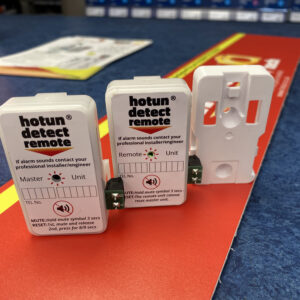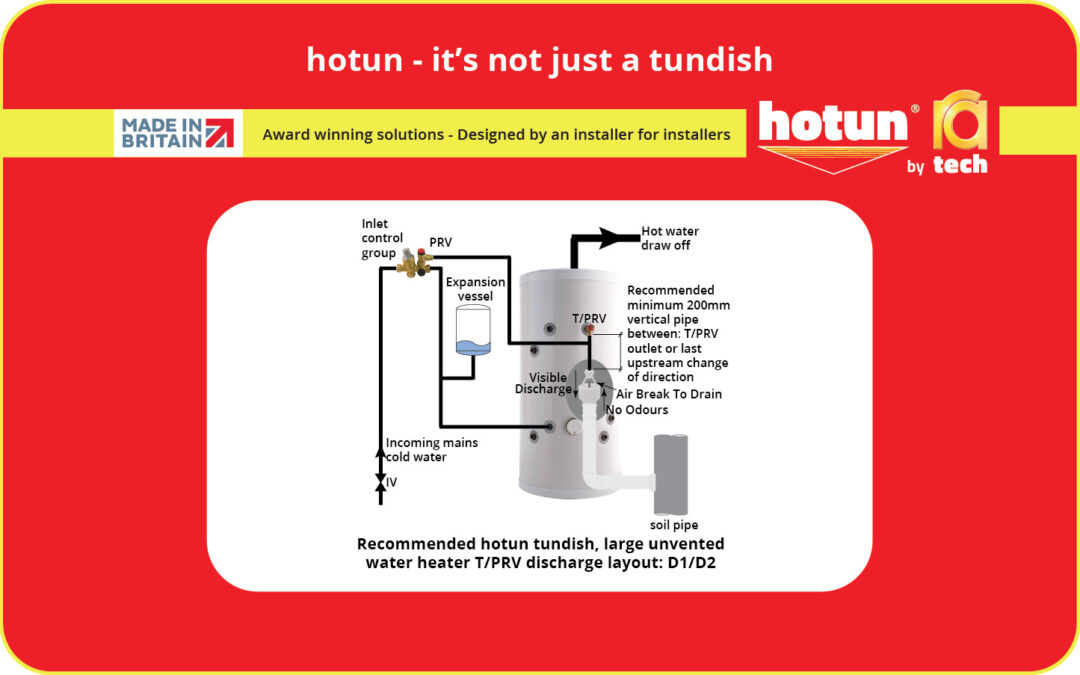Do I Have to Use Heat Rated Pipework on an Unvented Water Heater?
A common question our technical help desk gets asked every week is “do I have to use heat rated pipework on an unvented water heater” (D2 T/PRV discharge pipework.) This is asked primarily by homeowners, however, plumbers and engineers ask a subtly different question, because they are trying to find out what materials are suitable for use in this situation.
They are seeking to ensure that they are using the correct type of pipework as this is essential for safety and compliance with Building and Water Regulations.
In this blog post, we’ll explore what heat-rated pipework is, why it’s necessary for unvented water systems, and the key regulations guiding its use.

What Is “Heat-Rated” Pipework?
Heat-rated pipework refers to pipes that are specifically designed and tested to withstand high temperatures associated with hot water heaters, specifically the D2 pipework from the temperature relief valve fitted to (as a safety device) unvented cylinders.
Typically D2 is installed using copper, stainless steel, or specially rated plastics. Plastic heat-rated pipes are manufactured to ensure they won’t degrade or fail when exposed to hot water, high pressure, or thermal cycling.
Why Is Heat Rated Pipework Necessary for Unvented Water Heaters?
Unvented water heaters operate at higher pressures and temperatures than traditional vented systems.
As a result, the key requirements are:
1) Material resilience – The pipework must resist deformation, corrosion, or failure due to sustained high temperatures.
2) Safety – Properly rated pipework reduces the risk of leaks, bursts, or failures that could lead to water damage or safety hazards.
3) Regulatory compliance – Building regulations and standards specify the use of appropriately rated pipework for unvented systems.
In short:- Using heat-rated pipework is a critical safety requirement for unvented hot water systems.
Do Regulations Require Heat-Rated Pipework?
Yes. In the UK, Building Regulations Part G and Part L specify the standards for hot water systems, including the use of suitable pipework materials.
Specifically:
BS 6700 (now superseded by BS EN 12828) – Standards outline the design and installation of hot water services.
The Water Supply (Water Fittings) Regulations require that pipework withstand the operating temperatures and pressures.
The manufacturers installation instructions written by RA Tech and included with each hotun dry trap tundish have got some very useful information about the materials suitable for use and can be found here:-
Note – Failure to use appropriate pipework can lead to non-compliance, safety issues, and potential legal liabilities.
Which Types of Pipework Are Suitable for Unvented Water Heaters?
Commonly used heat-rated pipe materials include:
Copper pipes:- Widely used, durable, and heat-resistant.
Stainless steel pipes:** Excellent corrosion resistance and high-temperature tolerance.
Plastic pipes :- Some plastics are rated for high temperatures. It is commonly accepted that polypropylene (push fit), MuPVC solvent weld and HDPE are recognised as being suitable for high temperature applications. See link above
Important: Always confirm that the pipework material and fittings are rated for the maximum operating temperature and pressure of your unvented system.
Best Practices for Installing Heat-Rated Pipework
Follow the specifications provided in the RA Tech installation manual.
Proper installation: Ensure that all pipework is suitably supported, especially plastic pipework where it is recommended to have supports every 300mm and attention is given to the thermal expansion of plastic pipe to ensure that is does not buckle when in use.
Regular inspection: Annual service and inspection is recommended by RA Tech to ensure the water heaters effective operation and safety,
Products to enhance maintenance and reliability
We recommend the fitment of the new (July 2025) hotun detect remote, automatic, audible, and visual T/PRV discharge alarm unit. The master unit is attached to the hotun dry trap tundish. The remote/slave unit is mounted on its patress box and located somewhere in the living space in a convenient location. The two units are connected together by a small core (communication) cable. Each unit has its own 2032 coin cell power supply.
When the master unit senses water, it activates the alarm on both the master and slave units. Once the occupier has noticed the alert, they can mute both units from the accessible slave/remote unit.
Full details coming soon

Final Thoughts
Using heat-rated pipework on an unvented water heater isn’t just a best practice — it’s a regulatory requirement that ensures safety, reliability, and compliance. Properly rated pipework can withstand the high temperatures involved, preventing failures that could result in water damage or safety hazards.
We detail a further discussion on regulatory requirements on our website here:
https://hotun.co.uk/regulations-applicable-for-compliance/
To hear about the 5 Senses of hotun take a look at our YouTube clip here:
If you’re unsure about the type of pipework suitable for your unvented system or need professional guidance, contact our technical helpline. (01332-702678) Our experts can advise on the correct materials and installation procedures to keep your system safe and compliant.
Stay tuned for more FAQs and expert advice in our series of blog posts!
hotun – it”s NOT just a tundish
Have questions? Reach out to our team for expert support and advice!
Technical Helpline – 01332 702678
e-mail – info@ratechuk.co.uk

